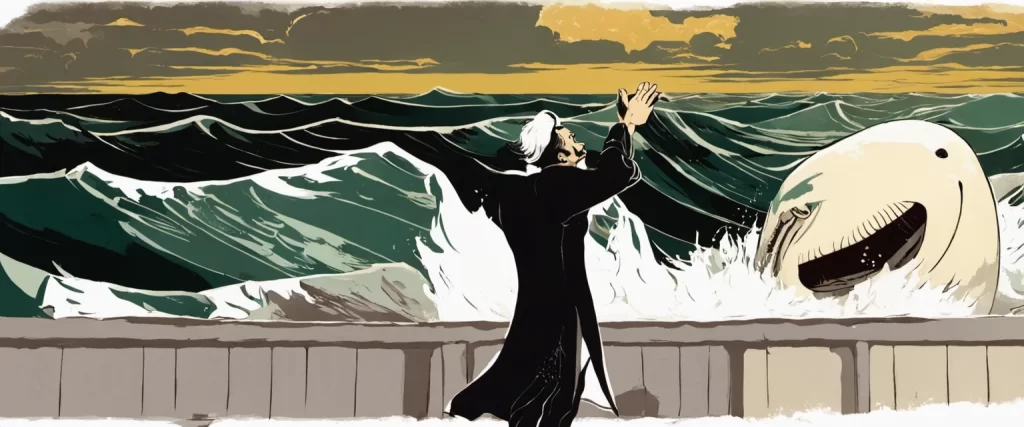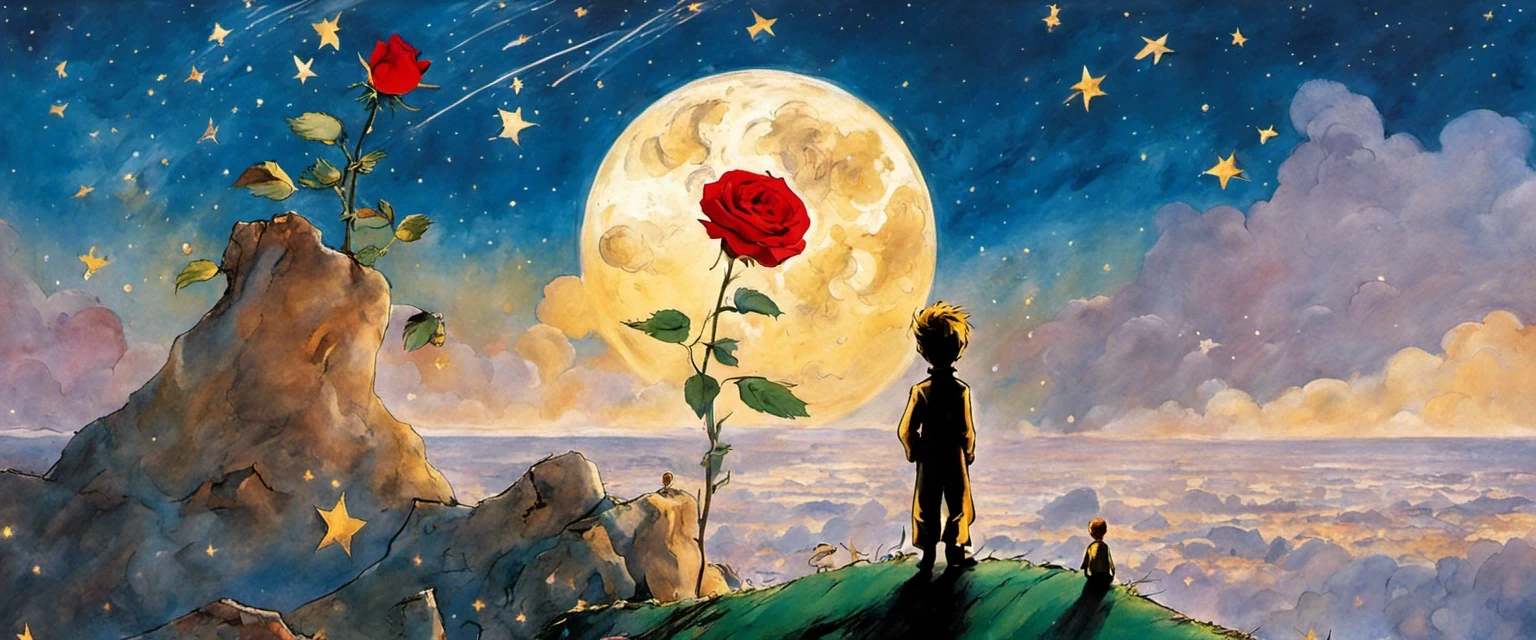—The Little Prince & Jonathan Livingston Seagull
In the vast realm of literature, there are certain works that transcend time and continue to captivate readers across generations. Two such books that have left an indelible mark on countless souls are “The Little Prince” by Antoine de Saint-Exupéry and “Jonathan Livingston Seagull” by Richard Bach. Though written in different eras, these powerful narratives share a common thread of imparting profound life lessons through the eyes of extraordinary protagonists.
Published in 1943, “The Little Prince” is a beloved novella that has charmed readers of all ages with its whimsical tale of a young prince who travels through the universe on a quest for meaning. On the other hand, “Jonathan Livingston Seagull,” published in 1970, tells the story of a seagull named Jonathan who dreams of flying beyond the limitations of his flock and pushes himself to achieve greatness.
While the surface plots of these two books may appear vastly different, a closer examination reveals a multitude of intriguing similarities and thematic connections. Both narratives explore the complexities of life, the pursuit of purpose, and the significance of individualism in a conformist world. Furthermore, they delve into the profound questions that often plague the human condition, addressing themes of love, friendship, loss, and the eternal quest for self-discovery.
Through the enchanting prose and profound metaphors that permeate both “The Little Prince” and “Jonathan Livingston Seagull,” Saint-Exupéry and Bach intricately weave tales that challenge conventional thinking and invite readers to reflect upon their own existence. These books serve as allegorical mirrors, reflecting the timeless struggles and triumphs of the human spirit.
In this comparative study, we will explore the similarities and differences between these two literary masterpieces. By delving into the characters, symbolism, and underlying themes, we aim to shed light on how these stories resonate with readers and provide valuable insights into the human experience. Through a comparative analysis of “The Little Prince” and “Jonathan Livingston Seagull,” we hope to uncover the universal truths they offer and the ways in which they inspire us to ponder the deeper mysteries of life.
With the turn of each page, the reader embarks on a transformative journey, witnessing the growth and enlightenment of the protagonists. Together, we will embark on a similar voyage of exploration, surfacing the profound wisdom contained within these pages and discovering the profound impact of these two remarkable works of literature.
Brief Summary of Two Books
The Little Prince by Antoine de Saint-Exupéry
“The Little Prince” is a children’s novella written by Antoine de Saint-Exupéry. It tells the story of a pilot who crash-lands in the Sahara Desert and encounters a young boy known as the Little Prince. The Little Prince shares his journey from planet to planet, meeting various peculiar characters along the way. Through their conversations, the prince imparts lessons about life, love, and the importance of imagination. The book explores themes of innocence, friendship, and the power of seeing beyond the surface. It is a whimsical and philosophical tale that captivates readers of all ages.
Jonathan Livingston Seagull by Richard Bach
“Jonathan Livingston Seagull” is a short philosophical novel that tells the story of a seagull named Jonathan Livingston who has aspirations beyond the everyday limitations of his flock. While other seagulls are content with their simple lives of eating and surviving, Jonathan is determined to fly higher and faster than any other seagull. His relentless pursuit of perfection and his unwillingness to conform to societal constraints lead him to be banished by his flock. Despite the isolation and rejection, Jonathan continues his quest to push the boundaries of his abilities, eventually mastering incredible flight techniques and discovering the joy of true freedom. Along his journey, Jonathan encounters wise and enlightened seagulls who serve as mentors, guiding his understanding of the deeper meaning of life. Through his determination and self-discovery, Jonathan learns that the true purpose of life is to explore and realize one’s individual potential, and that conformity should never limit one’s dreams or limit their path to personal growth.
Comparison between Two Books

Similarities in introspection
Both The Little Prince by Antoine de Saint-Exupéry and Jonathan Livingston Seagull by Richard Bach explore the theme of introspection in a parallel manner. They depict the journey of their protagonists as they seek to understand themselves and find meaning in their lives.
Firstly, both books highlight the importance of stepping out of societal norms and expectations to embark on a personal journey of self-discovery. In The Little Prince, the titular character leaves his small planet and travels to different planets, meeting various individuals along the way. Similarly, Jonathan Livingston Seagull breaks away from the conformity of his seagull community and pursues a higher plane of existence by mastering flight. This deliberate departure from the ordinary reflects their desire to introspect and explore their true passions and desires.
Secondly, both stories emphasize the necessity of solitude for introspection. The Little Prince often retreats to his own planet, spending time alone and contemplating life. Jonathan Livingston Seagull also isolates himself from his fellow seagulls to focus on perfecting his flight skills. This solitude allows them to distance themselves from external distractions and engage in deep introspection which leads to profound self-awareness.
Moreover, both books highlight the significance of learning from others in the process of self-reflection. The Little Prince encounters various characters on his journey, each representing different aspects of human nature. Through these encounters, he learns valuable lessons about the complexities of human behavior and the importance of emotional connections. Similarly, Jonathan Livingston Seagull meets other seagulls who share his desire for self-improvement and he learns from their experiences and teachings. These interactions stimulate their introspection and provide them with new perspectives on life.
Lastly, both novels examine the idea of fulfilling one’s purpose in life through introspection. The Little Prince constantly questions the meaning of existence and seeks understanding from his encounters and observations. He ultimately realizes that his purpose is to spread love and preserve childlike innocence. Similarly, Jonathan Livingston Seagull discovers that his purpose lies in pushing the boundaries of his abilities and sharing his knowledge with others. Through introspection, both characters find a sense of purpose that goes beyond societal expectations and norms.
In conclusion, The Little Prince and Jonathan Livingston Seagull share similarities in their exploration of introspection. Both books demonstrate the importance of breaking away from societal constraints, embracing solitude, learning from others, and ultimately discovering one’s purpose. These themes resonate with readers, urging them to look inward and embark on their own journeys of self-reflection.
Divergences in introspection
Both The Little Prince by Antoine de Saint-Exupéry and Jonathan Livingston Seagull by Richard Bach explore introspection and the importance of self-discovery. However, there are noticeable divergences in how these themes are depicted in the two books.
In The Little Prince, introspection is portrayed as a profound and essential part of personal growth. The protagonist, The Little Prince, embarks on a journey through different planets, encountering various characters that represent different aspects of human nature. Through these encounters, the prince learns important life lessons, ultimately leading to a deeper understanding of himself. The book emphasizes the significance of introspection by encouraging readers to contemplate their own existence and values.
On the other hand, Jonathan Livingston Seagull takes a more metaphysical approach to introspection. The story focuses on Jonathan, a seagull who yearns for more than the repetitive life of his flock. He becomes engrossed in mastering flight and discovers the joy of individuality. Jonathan’s introspection is symbolized through his relentless pursuit of perfection in flight, going against the flock’s conformity. The book encourages readers to explore their passions without conforming to societal expectations.
The divergence lies in how introspection is presented in these books. The Little Prince’s approach emphasizes the importance of reflecting on one’s thoughts and emotions, particularly through meaningful connections with others. By interacting with various characters, The Little Prince learns valuable life lessons, teaching readers the significance of introspection in shaping their own identities.
In contrast, Jonathan Livingston Seagull focuses on the internal journey of self-discovery through the pursuit of personal passions. Jonathan’s introspection is portrayed as a solitary and individualistic endeavor, detached from the external world. By challenging and pushing his limits, Jonathan embodies the idea that introspection can lead to self-discovery and self-fulfillment.
Aside from this divergence, both books share the underlying message that introspection is indispensable for personal growth and understanding. While The Little Prince highlights the importance of connecting with others, Jonathan Livingston Seagull empowers individuals to embrace their uniqueness and pursue their own paths. Ultimately, these divergent approaches to introspection contribute to the rich tapestry of themes explored in each book, offering readers different perspectives on self-exploration and discovery.

Conclusion
Both The Little Prince by Antoine de Saint-Exupéry and Jonathan Livingston Seagull by Richard Bach are highly acclaimed books with unique messages. Ultimately, the preference for reading one over the other depends on personal preference and the themes that resonate with you.
The Little Prince is a timeless novella that has captivated readers for decades. It explores profound philosophical themes such as the nature of love, friendship, and human connections. The book uses simple language and whimsical illustrations to convey deep and thought-provoking messages. Many readers appreciate the book’s ability to convey complex emotions and insights through its allegorical narrative.
On the other hand, Jonathan Livingston Seagull is a book that delves into the importance of following one’s own path and breaking free from societal norms. It tells the story of a seagull that seeks to achieve spiritual enlightenment through flying beyond the boundaries set by his flock. The book encourages readers to pursue their dreams and reach their fullest potential, often resonating with individuals seeking personal growth and self-discovery.
Both books offer valuable life lessons and engage readers in profound contemplation. Ultimately, the decision of which book is more worthy of reading depends on the specific themes and messages that resonate with you personally. Both books are highly regarded and have influenced numerous readers worldwide, so you may find it worthwhile to read them both and decide for yourself.



